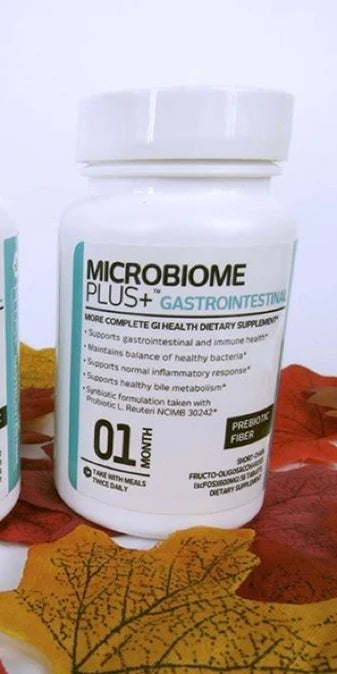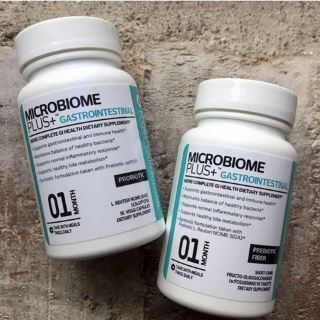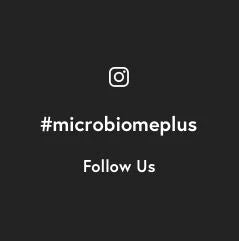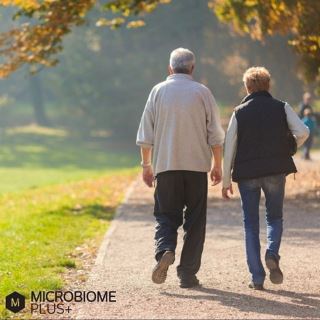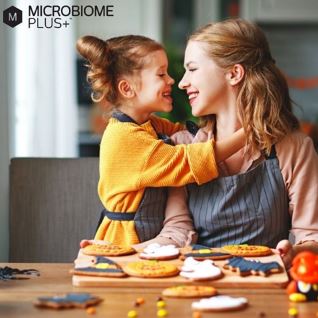As food dyes are getting more media attention, people are becoming increasingly aware of their side effects. As of recently, the FDA will no longer allow red dye 3 due to cancer risk. Yet red dye 40 is still allowed in foods in the US and Canada. Read this post to understand how red dye 40 can trigger IBS, cause gut inflammation, and disrupt your microbiome—along with tips on how to eliminate it from your diet and start detoxing.
Disclaimer: This post is for informational purposes only. Please discuss your health concerns with your care provider and consult them before taking any supplements to avoid disease and drug interactions.
What is Red Dye 40?
Red Dye No. 40 is a synthetic food dye made from petroleum. It’s used to achieve a bright crimson color in condiments, candy, dairy products, beverages, and baked goods.
Red dye 40 is the most widely used food dye!
Although Red 40 was first registered with the FDA in 1971, its safety hasn’t been re-evaluated in over a decade.
According to the FDA, Red 40 is combined with aluminum to create Red 40 Lake in products like chewing gum. This prevents colors from “bleeding” but adds another layer of toxicity.
What is Red Dye 3?
Red Dye No. 3 is another synthetic red food dye that gives foods and drinks a bright, cherry-red color. It’s found in candy, cakes and cupcakes, cookies, frozen desserts, frostings and icings, and some drugs.
Red Dye 3 is also known as erythrosine, E127, and Red No. 3.
As of January 15, 2025, the FDA no longer allows the use of Red Dye 3 in foods and drugs in the US.
However, Canada still hasn’t banned Red Dye 3.
What Other Dyes Should You Watch Out for?
The following dyes are also allowed to be used in food, according to the FDA:
- Blue No. 1
- Blue No. 2
- Green No. 3
- Yellow No. 5
- Yellow No. 6
- Citrus Red No. 2 (Used only for coloring the skin of fresh oranges that are not processed)
- Orange B (Only approved for use in hot dog and sausage casings; hasn’t been used for years decades)*
*Orange B has been found to contain a cancer-causing contaminant. In 1978 the FDA proposed banning Orange B but never bothered to finalize the ban since companies stopped using it (Zhang et al., 2023).
The Link Between Red Food Dye, IBS & Gut Microbiome Imbalances
Red food dye has been getting a lot of attention for its side effects in children—and for a good reason. Research on over 800 food products marketed to children found that more than 90% of candies, snacks, and drinks contain synthetic dyes (Batada et al., 2016).
One alarming statistic reveals that 94 % of people over 2 years old in the USA consume Red 40 (Doel et al., 2016).
The ingestion of food dyes in children has been linked to a host of neurobehavioral problems, including inattention, impulsivity, and hyperactivity. Red 40 has also been shown to accelerate the appearance of immune-system tumors in mice and cause hypersensitivity in some people (Lagakos & Mosteller, 1981; Kobylewski & Jacobson, 2012).
Over the past century, more food dyes have been found to be risky than any other category of food additives! (Zhang et al., 2023)
Many synthetic food dyes have been linked to immunological, carcinogenic, genotoxic, hypersensitivity, and other toxic health effects (Kobylewski & Jacobson, 2012).
To make matters worse, food dyes are a major source of pollution. Waste from all these synthetic food dyes is poisoning the soil and is very difficult to eliminate and neutralize in the environment (Singh et al., 2024).
However, we are facing another huge health challenge in the background: the impact of food dyes on inflammatory gut disorders in both children and adults.
The devastating health effects that food dyes can have on gut health and the gut microbiome are now surfacing. Just three dyes—Red 40, Yellow 5, and Yellow 6— account for 90% of all dyes used. Of them, Red 40 and Yellow 6 are the most widely used ones, and they have both been linked with IBD-like colitis in mice (He et al., 2016).
2023 Study Links Red 40 with DNA Damage, Gut Inflammation & Gut Dysbiosis
As synthetic food dyes made their way into foods in the 70s and 80s, metabolic diseases became rampant and doctors started seeing the first cases of early-onset colorectal cancer in the 1990s. Some scientists think that Red 40 is one of the main culprits. According to one scientific review, Red 40 is not only toxic to the gut but may also be a carcinogen (Hofseth et al., 2024).
A 2023 US study found that Red 40 causes DNA damage, triggers colonic inflammation, and impacts the microbiome in mice (Zhang et al., 2023).
The authors of the study state that food dyes found in ultra-processed foods may be contributing to a rise in colorectal cancer among young people over the past 40 years. Specifically, the increased use of synthetic food dyes, including Red 40, coincides with the rise of early-onset colorectal cancer (Zhang et al., 2023).
Mice fed an unhealthy high-fat diet and Red 40 for 10 months experienced DNA damage, gut dysbiosis, and low-grade colonic inflammation. Their findings suggest that Red 40 is a dangerous food dye that triggers a host of gut issues, which can make people more susceptible to colorectal cancer (Zhang et al., 2023).
2022 Study Suggests Red 40 May Trigger IBD
In another 2022 US study, chronic exposure to Red 40 in mice in amounts commonly found in food disrupted gut health and triggered colon inflammation (Kwon et al., 2023).
The study found that Red 40 caused a spike in gut serotonin in mice, altering their gut microbiome. It also impaired the gut barrier, leading to symptoms similar to leaky gut (Kwon et al., 2023).
When the tight junctions in the gut loosen (as in leaky gut), harmful substances like bacteria, viruses, and undigested foods may pass through it. This may trigger gut and whole-body inflammation and further gut microbiome imbalances (Aleman et al., 2023).
“What we have found is striking and alarming, as this common synthetic food dye is a possible dietary trigger for IBDs,” said the study’s senior author Waliul Khan, PhD.
Gut microbiome imbalances are among the main contributors to Irritable Bowel Syndrome (IBS), Inflammatory Bowel Disease (IBD), and other inflammatory diseases of the gastrointestinal tract. The fact that Red 40 can cause significant gut microbiome inflammation and disruption is a critical finding!
So, how does Red 40 do it?
What Does Red 40 Do to Your Stomach? Can Red 40 Cause Colitis?
Many people report nausea, vomiting, or diarrhea after consuming products containing Red 40. However, it’s much harder to discern the chronic negative effects of Red 40 on the gut in people who have been consuming products containing this dye regularly.
Red 40 has been shown to cause colitis in mice. Although we need more clinical studies, scientists think that Red 40 may also contribute to colitis and other inflammatory gut issues in humans—especially in children and susceptible adults exposed to this food dye long-term (Zhang et al., 2023; Kwon et al., 2023).
When you ingest Red 40, it releases toxic chemicals called free aromatic amines in the gut. Some of these chemicals are potentially carcinogenic and mutagenic, which means that they can damage the DNA in gut cells and cause inflammation (Kwon et al., 2023).
Once released, the byproducts of Red 40 wreak chronic low-grade inflammation and oxidative stress in the gut (Kwon et al., 2023).
In turn, this causes gut dysbiosis, damages the integrity of the gut lining, and weakens the gut mucus barrier over time (Kwon et al., 2023).
Red 40 can also block the growth of certain beneficial gut bacteria. At the same time, it causes unhealthy gut bacteria like Turicibacter—which is normally found in only small amounts in the colon—to become dominant. These gut microbiome disturbances cause gut serotonin to rise above healthy levels, further fueling inflammation and oxidative stress (Kwon et al., 2023).
Additionally, exposing foods that contain Red 40 to high temperatures can release toxic fumes composed of nitrogen and sulfur oxides.
Who Is Most Sensitive to Red 40?
It’s critical to point out that mice exposed to Red 40 during early life were much more susceptible to colitis later. Childhood is a crucial period that influences susceptibility to IBD in later life. Having in mind all the other risks that Red 40 poses to health, avoiding this food dye in growing children should be a priority for parents (Kwon et al., 2023).
People who already have gut issues should also be extra cautious. If your gut lining and gut microbiome are already compromised, dyes like Red 40 are more likely to cause additional issues.
Eliminating & Detoxing Red Dye
Which Foods and Products Contain Red Dye 40?
Here are all the names red dye 40 may go by in foods:
- Red 40
- Red 40 Lake
- FD&C Red No. 40
- FD&C Red No. 40 Aluminum Lake
- Allura Red AC
- CI Food Red 17
- INS No. 129
- E129
Red dye 40 may be present in all the following foods:
- Cakes, cake mixes, pastries, and frosting
- Cereals
- Candy and gum
- Flavored yogurt and other dairy products
- Puddings and gelatin
- Sports and energy drinks
- Ice cream and popsicles
- Soda and juice
- Salad dressings
- Gummy vitamins
- Condiments
- Protein powders
- Chips and salty snack foods
This list is not comprehensive. Carefully read food labels when purchasing food.
How to Make Sure You’re Avoiding Red 40
The best strategy for avoiding exposure to Red 40 and other food dyes is to eliminate ultra-processed foods and focus on a whole-food diet abundant in organic foods, fiber-rich foods, fresh produce, and healthy fats like olive oil.
If you’re used to buying packaged foods or eating out, try to make a gradual switch to preparing foods from scratch.
One great strategy is to make “one ingredient” meals. This means that everything in your recipe should be a simple, single-component food: vegetable, meat, oil, spice. Eliminate store-bought sauces, dressings, soups, and sweeteners that are often high in many additives, including food dyes.
Additionally, Red 40 is also sometimes added to toothpaste and cosmetics. Search for personal care products that contain natural ingredients and don’t use dyes and additives.
Also keep in mind that Red 40 can be found in some children’s pain relief, antihistamine, and antibiotic syrups. It’s also present in some prescription medications for adults. Talk to your doctor or pharmacist to find a dye-free medication alternative.
How Can You Detox Food Dyes?
The first and most important step to detoxing food dyes is to eliminate them from your diet and personal care products.
Ensuring you (or your child) are staying hydrated and eating a healthy diet high in macronutrients, micronutrients, and antioxidants will help the body naturally detoxify.
Also, consider using certain herbs and supplements that support detoxification. Herbs like Moringa provide key nutrients while also helping the body gently detoxify.
Turmeric is another great herb that acts as a natural and safe detoxifier (Kumar et al., 2025).
You may also want to look into doing a full colon cleanse. Our Colon Cleanse pills are a natural detox supplement meant to accompany a typical 7-30-day cleanse.
At Microbiome Plus+, we believe that good health starts in the gut. Recent research shows that probiotics have unique properties that help with biodetoxification (Pop et al., 2022). Probiotics also help rebuild a healthy gut microbiome, which supports immunity, strengthens the gut lining, and contributes to overall health.
Our L. Reuteri NCIMB 30242 is a clinically researched probiotic with GRAS status that supports gastrointestinal and heart health. Explore Our Shop for more options.
Food Dyes & IBS Infographic


Ana Aleksic, MSc (Pharmacy)
Ana is an integrative pharmacist, scientist, and herbalist with many years of medical writing, clinical research, and health advising experience. She loves communicating science and empowering people to achieve their optimal health. Ana has edited 1000+ and written 400+ posts, some of which reached over 1 million people. She has also authored several ebooks and book chapters. Her specialties are natural remedies, drug-supplement interactions, women’s health, and mental health. She is also a birth doula and a strong advocate of bridging scientific knowledge with holistic medicine.


